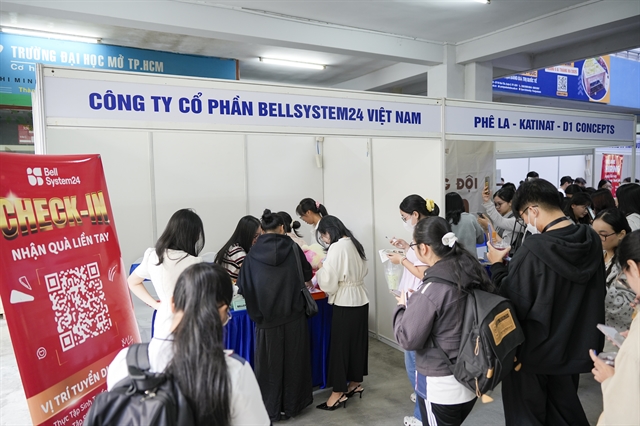 Society
Society

 |
| A sluice in the Mekong Delta province of Sóc Trăng is closed to keep out saltwater coming from the ocean. — VNA/VNS Photo Tuấn Phi |
HCM CITY — Authorities in the Cửu Long (Mekong) Delta are strengthening measures to cope with saltwater intrusion to mitigate its impacts on agricultural production in the ongoing dry season.
The delta’s 12 provinces and Cần Thơ are starting the harvests of winter-spring rice, fruits and seafood but are facing the peak period for saltwater intrusion into rivers.
The intrusion in the 2023-24 dry season is estimated to be higher than normal and will reach its peak in April, causing a shortage of water for irrigation and household use in many localities, according to the National Centre for Hydro-Meteorology Forecasting.
At the beginning of the dry season, coastal provinces in the delta, the country’s largest hub of rice, fruits and seafood, built temporary dams and repaired sluices to keep out saltwater and dredged irrigation canals to store more water.
In Kiên Giang, the country’s largest rice producing province, the Irrigation Sub-department and coastal districts are checking saltwater intrusion and repairing sluices and dams.
They have built or upgraded 27 earthen dams to protect the winter-spring rice and freshwater.
Lê Quốc Anh, deputy chairman of the Kiên Giang People’s Committee, has ordered relevant departments, agencies and localities to proactively take measures to cope with saltwater intrusion and drought.
Saltwater has entered deep into the province’s major rivers, and a salinity rate of 4 grammes per litre can be found 40km upstream in the Cái Lớn River.
Most plants can only tolerate a salinity of 1 gramme per litre.
Kiên Giang has harvested some 43,000ha of the winter-spring rice crop, or 15 per cent of the total area, according to its Department of Agriculture and Rural Development.
The remaining crop is safe from saltwater, protected by sluices, it said.
In Trà Vinh Province, the agriculture department has instructed localities to speed up dredging of irrigation canals and digging of new ones planned for this year.
The province plans to upgrade and build 384 irrigation canals with a total length of 315km and repair 12 embankments with a total length of 5.6km this year.
Localities have completed 10-15 per cent of the plan to upgrade and build irrigation works for this year.
They have collected water hyacinth from nearly 8,300sq.m of water surface in irrigation canals to facilitate the flow of water for irrigating rice fields.
In Sóc Trăng Province, saltwater intrusion is expected to be extremely high between March 1 and 10 with the coastal districts of Trần Đề, Long Phú and Kế Sách facing the highest risk.
Huỳnh Quốc Lâm, deputy chairman of the Long Phú People’s Committee, said salinity level has reached 12 grammes per litre since February, and all 30 saltwater prevention sluices in the district are closed.
Provinces in the delta have also stepped up dissemination of information about saltwater intrusion to the public so that they can take preventive measures.
Huỳnh Ngọc Nhã, director of the Sóc Trăng agriculture department, said it has asked localities to disseminate information about saltwater intrusion and water resources on the media to enable the public to cope with it and efficiently use freshwater.
Localities should check the salinity of water before pumping it for irrigation, and the public should follow instructions from authorities to cope with saltwater intrusion and store water for agricultural and household use, he added. VNS




